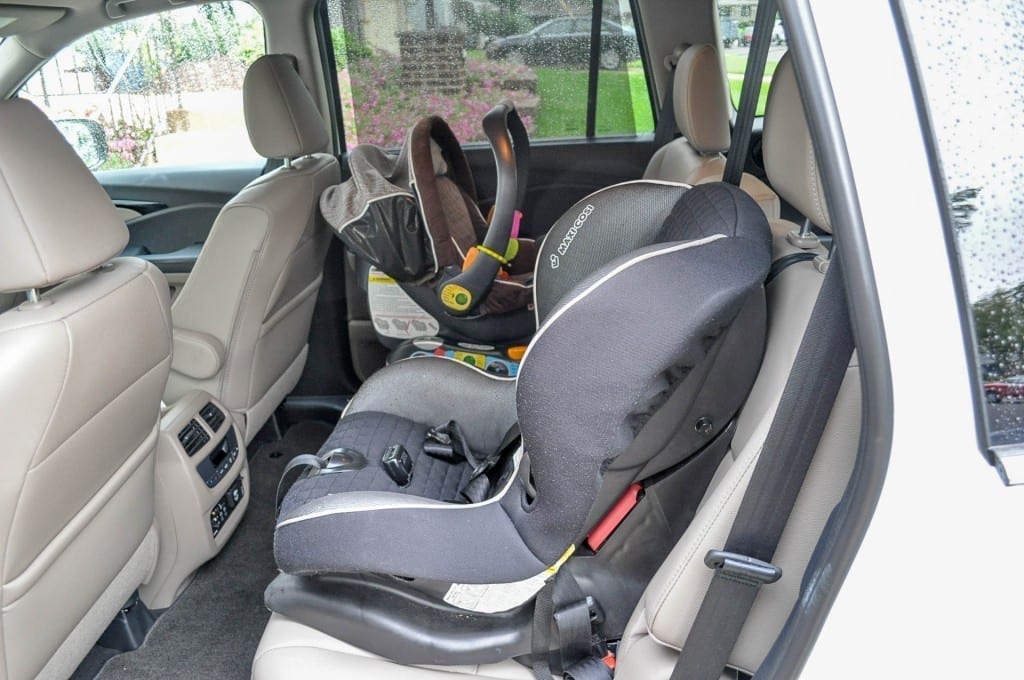Any family with kids has a car seat or two…or three. From infant car seats and convertible seats to booster seats, there are many types of car seats on the market to keep children safe as they grow. But did you know they can expire? I didn’t, until now. Turns out car seats, like many other things, are only good for so long. I suppose this shouldn’t really come as a surprise considering the fact that car seats are made from plastic, and depending on the climate you live in, things like varying temperature changes and every day wear and tear and degrade a car seat over time. That’s why it’s important to check expiration dates on car seats and replace them as needed for your child’s safety.
Any family with kids has a car seat or two…or three. From infant car seats and convertible seats to booster seats, there are many types of car seats on the market to keep children safe as they grow. But did you know they can expire? I didn’t, until now. Turns out car seats, like many other things, are only good for so long. I suppose this shouldn’t really come as a surprise considering the fact that car seats are made from plastic, and depending on the climate you live in, things like varying temperature changes and every day wear and tear and degrade a car seat over time. That’s why it’s important to check expiration dates on car seats and replace them as needed for your child’s safety.
In addition to regular wear and tear taking a toll on a car seat, it’s important to point out that car seat technology is evolving every year. This means the shiny new car seat on the store shelf is likely to keep a child safer than a ten-year-old car seat collecting dust in the back of the garage. To put this into perspective, 30 years ago the latest and greatest LATCH system technology didn’t even exist. If you have kids, you know that the LATCH system has been proven to make car seats safer and results in fewer infant and child deaths in car crashes. In fact, 30 years ago “infant car carriers weren’t even widely available.” Fortunately, over the years, car seat manufacturers learned new things through research, trial, and error, and were able to take all of that research and create car seats outfitted with better technology to better protect our children.
As a result of new technology like the LATCH system, the IIHS reports that the “number of infants killed in car crashes since 1975 has plummeted 80 percent, and the number of children under 3 killed in car crashes has similarly dropped by 66 percent.” In addition to LATCH technology, “car seats today have more technology and features built into them than one would think necessary—or even realize.” Like what? Well, for starters car seats today come equipped with side-impact protection and spring-loaded whiplash protection, and some have more cup holders than a child would ever need.
All of these technological features are important to remember in terms of a car seat’s expiration date. The temptation to simply reuse a car seat from child to child over a five or even ten-year span is tempting. Car seats are expensive, after all. However, the typical car seat expires after “six years from the date of manufacture.” It’s imperative to resist the temptation to save a buck and replace car seats as needed because that old car seat won’t have all the technology and design updates that new ones have. Don’t believe me? Take a look at an older car seat and notice “how different the design is and how it works when compared to new, on-the-shelf models.” New car seats are backed up with “crash test data, advances in materials, manufacturing, and design” that “improve functionality and safety.”

According to Jennifer Stockburger, director of operations at the Consumer Reports’ auto test center:
“Expiration dates are a combination of technology, the latest standards, and product integrity. Adhering to them might actually make it easier for the parent to get it right, which ultimately makes our kids safer.”
Wondering how you can find out the expiration date of your child’s car seat? Expiration dates can usually be found on the serial number sticker.


Join the conversation!